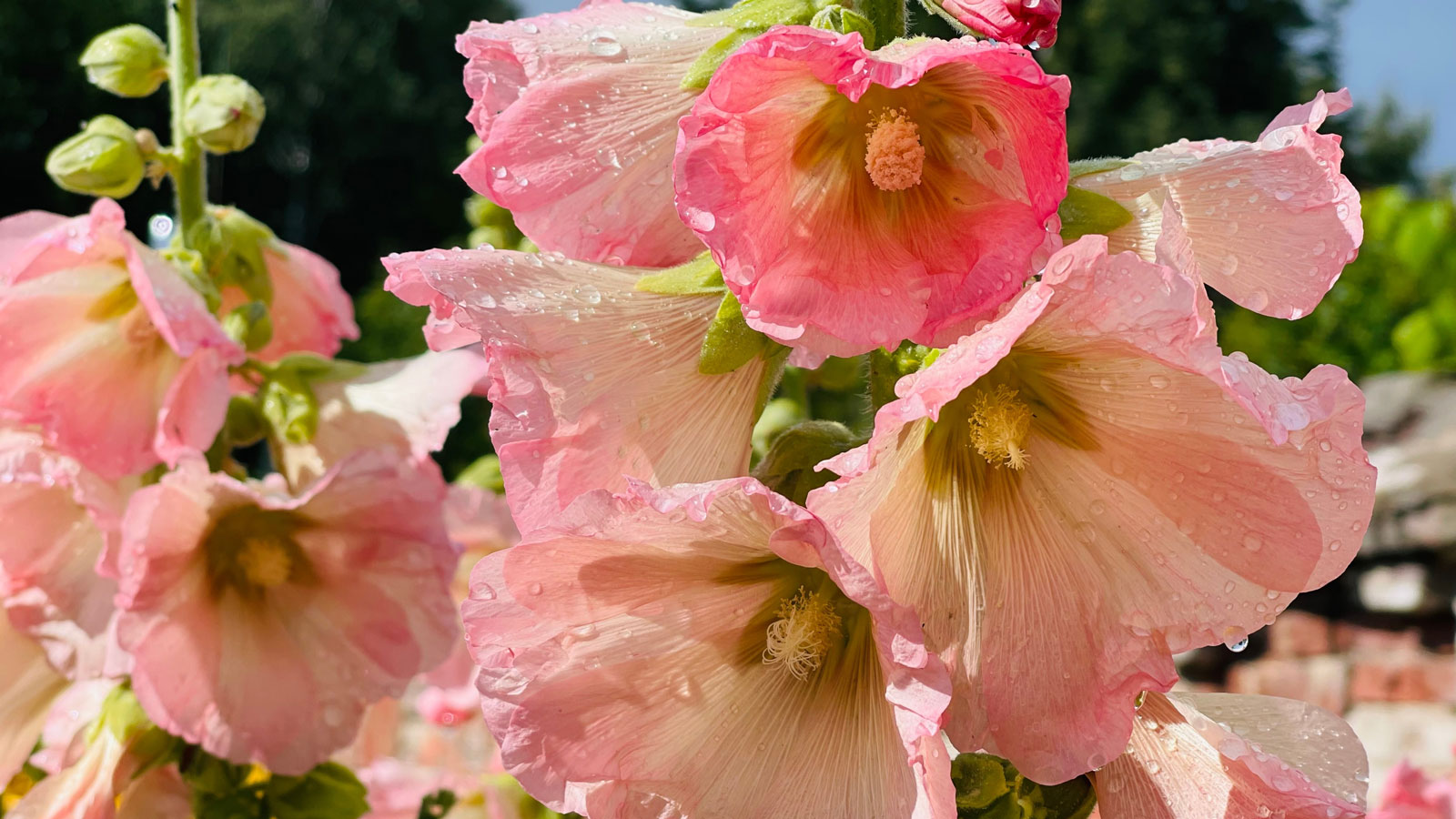Watering Hollyhocks: How And When To Water Alcea Rosea
They are some of the most statuesque, elegant flowering plants you can grow in beds and borders, so make sure you’re watering hollyhocks well to keep them looking their best


Steeped in tradition, hollyhocks often grace the borders of cottage gardens and mixed beds. Their awe-inspiring spikes, with large colorful blooms, are coveted by both growers and passing pollinators. Though their stately beauty may lead one to think otherwise, this elegant biennial is easy to grow – and watering hollyhocks doesn’t have to be problematic.
You just need to get the timings and measurements right, and make certain that beds remain consistently moist throughout the season. But exactly how much water do hollyhocks need, and when? Read on to find out…
When Hollyhocks Need the Most Watering
Though these tall flowering plants can tolerate brief periods of drought, routine irrigation is essential for the development of both the stems and buds. In terms of specific hollyhock watering requirements, the frequency of watering will vary from one location to the next.
If your region receives less than approximately an inch (2.5cm) of water per week in summer, consider adding hydration to your list of garden chores. Routine flower watering is also beneficial where hollyhocks have been grown in regions that are especially hot, or those planted in pots or containers. As the weather begins to cool in fall, watering can be reduced in preparation for plant dormancy through winter.
Signs That Hollyhocks Need Watering
It’s easy to monitor whether or not plants should be watered by regularly checking moisture levels within the soil. This can be done by pressing an inch (2.5cm) into the soil with your finger. Dry soil will definitely be more of an issue during summer months, especially on hot days. Being able to identify hollyhock sun requirements can give you the edge with watering needs, as the two factors often go in tandem.
If the upper portion of the growing medium is dry, the hollyhocks are likely to appreciate a long soaking. Should hollyhock plants go unwatered, several changes may signal their stress to growers. The leaves of particularly thirsty plants are likely to take on a wilted or curled appearance. Overwatering can also become an issue, causing the foliage of waterlogged hollyhocks to begin yellowing, leading to the development of root rot and other fungal diseases.

Watering Hollyhocks in Open Ground
Hollyhock irrigation is most effective when the water is delivered directly to the plant’s root zone. This can be done by hand using a watering can or through the use of drip irrigation and soaker hoses. Slow watering will allow for deeper penetration of the growing medium, conserving moisture.
Sign up for the Gardening Know How newsletter today and receive a free copy of our e-book "How to Grow Delicious Tomatoes".
Mulch can also be used to help reduce the frequency of watering and suppress any soil that may splash onto plant foliage. Watering from below, making certain to avoid wetting the plant’s leaves, is vital to the prevention of fungal disease and its spread. Hollyhock rust is of particular importance and is a certain cause of demise in severely infected plants.
Watering Hollyhocks in Containers
Hollyhock water needs when grown in pots and containers follow similar lines to plants grown directly in flower beds. Good drainage and consistent moisture create the most hospitable conditions for plants. Along with fertilizing hollyhocks, experienced growers do note an increased need for watering through summer.
A daily check of moisture levels can be helpful to be certain that pots are not allowed to dry, and that plants don’t become stressed. It is not uncommon for hollyhocks grown under these conditions to require supplemental watering every two or three days. Apart from this, watering hollyhocks shouldn’t be problematic.

Watering Hollyhocks in Winter
Hollyhocks in winter remain dormant, with most plants dying back to the ground. These plantings only seldom require water, as excess moisture at this time is likely to lead to root rot and the loss of plants. Beds can be watered, with care, where winter conditions are mild and remain relatively dry. In cooler climates that experience freezing temperatures, avoid hollyhock watering until conditions improve in spring.
Frequently Asked Questions
How Often Do You Water Hollyhocks?
The frequency in watering hollyhocks will vary by garden. Consistent moisture throughout summer will help hollyhocks to flourish. Though rainfall may be sufficient to meet the needs of plants in some regions, growers living in those that are especially warm or dry should consider watering plants on a weekly basis, at a rate of around an inch (2.5cm) a week.
How Long Does a Hollyhock Live?
Hollyhocks are a biennial flower. This means that each plant will complete its life cycle over the course of two growing seasons. In the first year, plants will produce lush, green foliage. Hollyhocks then dieback, with the arrival of winter. The following spring, growth resumes, causing plants to elongate and finally begin to flower.

Tonya Barnett has been gardening for 13 years. Flowers are her passion. She has transformed her backyard into a cut flower garden, which she regularly chronicles on her YouTube channel http://www.youtube.com/@tonyawiththeflowers.